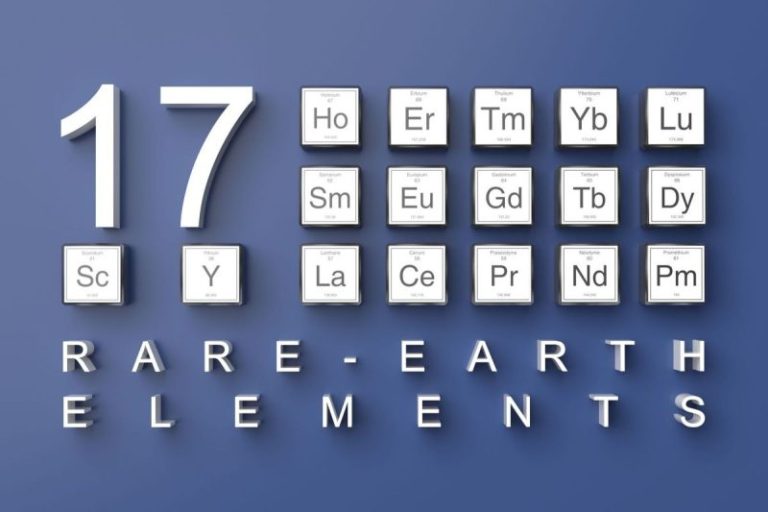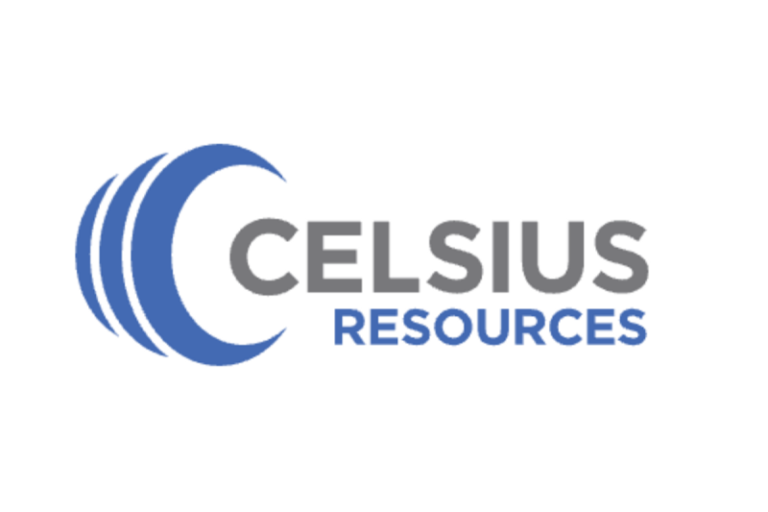Rare earth elements (REEs) are crucial for technologies like smartphone cameras and defense systems.
A select few from the group of 17 are also vital to clean energy transition industries such as electric vehicles (EVs) — neodymium and praseodymium are found in the permanent magnet synchronous motors used in electric vehicle drive trains.
China’s dominance in rare earths production and reserves has prompted countries like the US, Canada and Australia to boost their own mining and processing efforts to secure their supply chains.
In May 2024, the former US government announced a 25 percent tariff on imports of Chinese rare earth magnets beginning in 2026, aiming to both protect American industries from China’s trade practices and support domestic production of rare earths. One form of magnet that the tariffs will affect is sintered neodymium-iron-boron (NdFeB) magnets, crucial for EV motors and wind turbines.
This marks the first time rare earth magnets are included in Section 301 tariffs, signaling a significant move in the US-China trade conflict. The initiative is part of broader efforts to bolster US energy and national security.
Two months later, China’s State Council introduced regulations to tighten control over the country’s rare earth resources. Taking effect on October 1, 2024, these new rules impose strict oversight on REE mining, smelting and trading. They also ban the export of technology for extracting and separating rare earths and for making rare earth magnets.
New US President Donald Trump has escalated the trade war between the two countries significantly since he took office on January 20, 2025, announcing cumulative tariffs of 54 percent on imports of Chinese goods. This includes the 34 percent imposed on China on April 2 when Trump announced varying tariffs on nearly every country in the world.
The tariff drew a strong rebuke from China as it announced tight export controls on seven rare earth minerals: samarium, gadolinium, terbium, dysprosium, lutetium, scandium and yttrium. This move will cause a significant hit to defense and renewable energy supply chains globally.
Trump’s push to obtain an agreement with Ukraine that would give US mining companies access to rare earth mineral deposits in the country, alongside his stated goal to annex Greenland for its rare earth largess have also brought much attention to the sector.
Meanwhile, the EU is also seeking to reduce its reliance on Chinese rare earths through a new law enacted in May 2024, which aims to significantly boost domestic production of critical minerals, including rare earths, by 2030.
Data was gathered on April 7, 2025, using TradingView’s stock screener.
US rare earths stocks
The United States is striving to secure stable domestic supply of REEs outside China, a matter that has become even more pressing in 2025 due to the escalation of the US-China trade war and China’s new rare earth mineral export restrictions.
The nation has vast rare earths reserves and is the second largest global REE producer thanks to its sole operating mine, Mountain Pass. However, it currently lacks sufficient processing facilities.
American rare earths companies are working to address this imbalance, presenting investment opportunities for those looking to capitalize on the market’s growth potential. Learn more about MP Materials, Energy Fuels and NioCorp Developments, the three largest US rare earths stocks by market cap, below.
1. MP Materials (NYSE:MP)
Market cap: US$3.92 billion
Share price: US$23.99
MP Materials, the largest producer of rare earths outside China, focuses on high-purity separated neodymium and praseodymium (NdPr) oxide, heavy rare earths concentrate, lanthanum and cerium oxides and carbonates.
The company went public in mid-2020 after acquiring the Mountain Pass mine in California, the only operational US-based rare earths mine and processing facility. In Q3 2023, MP Materials began producing separated NdPr, marking a significant milestone. The company plans to increase rare earth oxide production by 50 percent within four years.
In April 2024, MP Materials was awarded US$58.5 million to support construction of the first fully integrated rare earth magnet manufacturing facility in the US. This funding, part of the Section 48C Advanced Energy Project tax credit, was granted by the Internal Revenue Service and US Department of the Treasury after the evaluation of around 250 projects based on their technical and commercial viability, as well as their environmental and community impact.
Located in Fort Worth, Texas, the facility began producing the NdFeB magnets crucial for EVs, wind turbines and defense systems this January with first commercial deliveries expected by the end of the year. MP Materials is sourcing raw materials from its Mountain Pass mine for an end-to-end supply chain with integrated recycling.
MP released its full year 2024 results on February 20, 2025, reporting record production of NdPr oxide at 1,294 metric tons (MT) and rare earth oxides (REO) in concentrate production at 45,455 MT.
2. Energy Fuels (NYSEAMERICAN:UUUU,TSX:EFR)
Market cap: US$725.33 million
Share price: US$3.45
Energy Fuels is a leading US uranium and rare earths company that operates key uranium production centers, including the White Mesa mill in Utah and the Nichols Ranch and Alta Mesa projects in Wyoming and Texas. It acquired the Bahia rare
The company finished construction of Phase 1 REE separation infrastructure at White Mesa in early 2024, and in June reported successful commercial production of separated NdPr that meets the specifications required for REE-based alloy manufacturing. The company believes it is the first US company in decades to achieve commercial-scale, on-spec rare earths separation from monazite. The Phase 1 REE separation circuit is now operating at full capacity.
Following its 2023 acquisition of the Bahia heavy mineral sands project in Brazil, Energy Fuels made multiple deals in 2024 with the aim of acquiring feedstock for White Mesa.
In early June of last year, Energy Fuels executed a joint venture that gives it the option to earn a 49 percent stake in Astron’s (ASX:ATR) Donald rare earths and mineral sands project in Victoria, Australia. Donald is expected to begin production as early as 2026, and will supply the White Mesa mill with 7,000 to 8,000 MT of monazite sand in rare earths concentrate annually in Phase 1, with plans to expand output in subsequent phases.
In October 2024, Energy Fuels acquired Australian mineral sands company Base Resources, which owns the Toliara project in Madagascar. According to the company, the Bahia, Donald and Toliara projects ‘have the combined ability to produce up to 43,000 metric tons of monazite per year.’
In its 2024 financial results for the year ending December 31, 2024, Energy Fuels reported production of about 38,000 kilograms of separated NdPr from its REE separation circuit at the White Mesa Mill.
Energy Fuels inked a memorandum of understanding with South Korea-based POSCO in mid-March for the potential creation of a non-China REE supply chain for EVs and hybrid EV drivetrains for US, EU, Japanese and South Korean auto markets.
3. NioCorp Developments (NASDAQ:NB)
Market cap: US$94.1 million
Share price: US$2.01
NioCorp Developments is advancing its Elk Creek project in Nebraska, which features North America’s highest-grade niobium deposit under development, with significant scandium production capacity.
An updated 2022 feasibility study highlights an extended mine life, improved ore grades and enhanced economics for niobium, scandium and titanium. Metallurgical testing has demonstrated the asset’s ability to produce high-purity magnetic rare earth oxides at a recovery rate of 92 percent or higher.
In April 2024, NioCorp announced plans to explore the feasibility of integrating the recycling of permanent rare earth magnets into its proposed Elk Creek critical minerals project in Southeast Nebraska. An assessment will be undertaken to better understand the technical and commercial viability of recycling post-consumer NdFeB magnets back into separated rare earth oxides, which could then be utilized in the production of new NdFeB magnets.
The initial phase of this investigation involved bench-scale testing and was successfully completed in October 2024.
The Elk Creek project is fully permitted for construction. NioCorp is working to secure financing to move the project forward, and the US Export-Import Bank advanced its application for financing to its next stage of due diligence in February.
Canadian rare earths stocks
As part of Canada’s Critical Minerals Strategy, the government has allocated C$3.8 billion in federal funding for opportunities across the critical minerals value chain, from exploration to recycling. REEs are among the minerals listed as critical.
Additionally, the government has designated C$7.5 million to support the establishment of a rare earths processing facility in Saskatoon, Saskatchewan. In mid-September 2024, the Saskatchewan Research Council (SRC) announced that the facility reached commercial-scale production, making it the first in North America to achieve this milestone. The SRC plans to produce 400 MT annually by early 2025.
Learn about Aclara Resources, Ucore Rare Metals and Mkango Resources, the three largest Canada-listed rare earth stocks by market cap, below.
1. Aclara Resources (TSX:ARA)
Market cap: C$106.68 million
Share price: C$0.53
Aclara Resources is advancing its Penco Module project in Chile, characterized by ionic clays abundant in heavy rare earths. Its objective is to generate rare earths concentrate via an environmentally friendly extraction process. This approach aims to eliminate the need for a tailings facility, minimize water use and ensure the absence of radioactivity in the final product.
Aclara and Vacuumschmelze penned a memorandum of understanding in early July 2024 to jointly pursue a ‘mine-to-magnets’ solution for ESG-compliant permanent magnets. The partnership seeks to develop a resilient, ESG-focused supply chain for these critical components.
Aclara successfully concluded a semi-industrial pilot plant program for Penco Module in 2023, yielding 107 kilograms of wet high-purity heavy rare earths concentrate from 120 MT of ionic clays.
The company submitted a new environmental impact assessment (EIA) for the project in June 2024 that features an improved design addressing environmental and social concerns, and it moved to the next stage in August. At the end of March 2025, it submitted a further report addressing technical observations and comments on its EIA from government agencies and local stakeholders, respectively.
Aclara is also advancing its Carina Module project in Brazil, which it discovered in 2023. In December of that year, Aclara disclosed an initial inferred resource for the project, saying it encompasses approximately 168 million MT grading 1,510 parts per million total rare earth oxides and 477 parts per million desorbable rare earth oxides.
In August 2024, Aclara released an updated preliminary economic assessment for Carina Module featuring initial capital costs of US$593 million and sustaining capital costs of US$86 million. Later in the month, the company signed a memorandum of understanding with the State of Goiás and Nova Roma to expedite the Carina Module project, emphasizing its importance for local development and Brazil’s critical minerals supply.
Aclara says it is fully financed to pursue its aims of achieving production by 2028. Its plans for 2025 include progressing permitting at both its rare earth projects, starting pilot plant activities at Carina by Q2 2025 and completing a pre-feasibility study by Q3 2025.
2. Mkango Resources (TSXV:MKA)
Market cap: C$84.83 million
Share price: C$0.32
Mkango Resources is positioning itself to be a leader in the production of recycled rare earth magnets, alloys and oxides via its 79.4 percent stake in Maginito with partner CoTec Holdings (TSXV:CTH,OTCQB:CTHCF).
Its mineral assets include the Songwe Hill rare earths project in Malawi, which is targeting neodymium, praseodymium, dysprosium and terbium, and its Pulawy rare earths separation project in Poland. The company also holds a diverse exploration portfolio in Malawi.
At the end of July 2024, Mkango’s wholly owned subsidiaries and the government of Malawi signed a mining development agreement for the Songwe rare earths project confirming the fiscal terms for its development, including a 10 percent interest to Malawi’s government and exemption from custom and excise duties imports and exports.
Maginito owns HyProMag, a firm focusing on rare earth magnet recycling. HyProMag is the licensee of the Hydrogen Processing of Magnet Scrap (HPMS) process, which demagnetizes and liberates rare earth magnets from scrap.
A pilot plant using a long-loop recycling process underpinned by the HPMS process was commissioned in July 2024, and commercial operations are anticipated to start in Q1 2025. Additionally, Maginito is expanding HyProMag’s recycling technology to the US through the joint venture HyProMag USA, with a positive feasibility study completed in November 2024. While the feasibility study was based on two HPMS vessels, HyProMag announced in March 2025 that conceptual studies are underway to expand the capacity to three vessels and the addition of ‘long-loop chemical processing’ to compliment the HPMS short-loop recycling process.
In an August 2024 update for investors, Mkango reported that HyProMag will receive 350,125 euros to develop its eco-friendly NeoLeach technology, which will further upgrade metals recovered with HPMS. The funding is part of the 8 million euro GREENE project from the European Commission’s Horizon Europe Programme, which aims to improve the resource efficiency and performance of rare earth permanent magnets.
Mkango completed a C$4.11 million private placement in early February 2025 to help fund the advancement of its rare earth magnet recycling projects in the UK and Germany. The next month, the company provided an update on the construction of its UK magnet recycling and manufacturing facility, which is on track to begin initial commercial production by the end of Q2 2025.
In late March 2025, the European Commission designated Mkango’s Pulawy project in Poland as a strategic project under the Critical Raw Materials Act.
3. Ucore Rare Metals (TSXV:UCU)
Market cap: C$77.1 million
Share price: C$1.06
Ucore Rare Metals is focused on the exploration and separation of rare earths in Canada and the US. The company owns the Bokan-Dotson Ridge rare earths project in Alaska and is developing a strategic metals complex for processing heavy and light rare earths in Louisiana. Ucore acquired an 80,800 square foot brownfields facility in Alexandria, Louisiana, for developing its first commercial REE processing facility in January 2024.
In Canada, Ucore’s Ontario-based RapidSX demonstration plant, operated by Kingston Process Metallurgy, was commissioned to evaluate the techno-economic advantages, scalability and commercial viability of the RapidSX technology platform for separating and producing REEs like praseodymium, neodymium, terbium and dysprosium. This initiative was supported by a US$4 million award from the US Department of Defense, granted to Ucore’s subsidiary, Innovation Metals.
In late April 2024, Ucore reported that it tested a mixed rare earths carbonate from Defense Metals’ (TSXV:DEFN,OTCQB:DFMTF) Wicheeda project and confirmed it was suitable for commercial-scale processing at Ucore’s planned facilities. According to the release, ‘(Wicheeda) is a source of material that can become a fundamental economic and technical component to Ucore’s plan of developing multiple SMC’s across North America.’
On July 9 2024, Ucore announced the execution of a non-binding memorandum of understanding with Cyclic Materials that aims to to qualify Cyclic’s recycled rare earth oxide product in Ucore’s process. This will start with the use of initial trial quantities from Cyclic to support Ucore’s rare earths demonstration program at its RapidSX facility. The agreement positions Cyclic Materials as a potential long-term source for Ucore’s planned facilities in the US and Canada.
In mid-August 2024, Ucore and Meteoric Resources (ASX:MEI,OTC Pink:METOF) signed a memorandum of understanding for Meteoric to supply 3,000 MT of total rare earth oxides from its Caldeira project in Brazil to Ucore’s Louisiana strategic metals complex. A similar deal was established with Australia’s ABx Group (ASX:ABX) in early September. It will see ABx supply Ucore with mixed rare earth carbonates from its ionic adsorption clay rare earths resource in Northern Tasmania.
At the start of 2025, Ucore was awarded C$500,000 via its partnership with Ontario’s Critical Minerals Innovation Fund to help finance the advancement of the company’s RapidSX Commercial Demonstration Facility.
Australian rare earths stocks
Australia ranks among the globe’s top rare earths producers and possesses the fourth largest rare earths reserves. The nation is notable for hosting the largest supplier of rare earths outside of China.
Learn more about Lynas Rare Earths, Iluka Resources and Arafura Resources, the three largest ASX-listed rare earths stocks focused stocks by market cap.
1. Lynas Rare Earths (ASX:LYC)
Market cap: AU$6.83 billion
Share price: AU$7.54
Well-known ASX-listed rare earths stock Lynas Rare Earths is the leading separated rare earths producer outside of China, with operations in Australia, Malaysia and the US. In Western Australia, Lynas operates the Mount Weld mine and concentrator and is ramping up processing at its Kalgoorlie rare earths processing facility.
In mid-2023, Lynas received AU$20 million from the Australian government’s Modern Manufacturing Initiative. This funding supports the Apatite leach circuit project at Lynas’ Kalgoorlie facility.
The company marked a pivotal moment in December 2023, when the Kalgoorlie facility achieved its first production milestone, signaling the transition from commissioning to full-scale operations. Additionally, Lynas is establishing a light rare earths processing facility and a heavy rare earths separation facility in Texas, US.
The company processes mined material at its separation facility in Malaysia. In late June 2024, Lynas announced plans to begin production of separated dysprosium and terbium products at its Malaysian operations in the 2025 calendar year.
In August, the firm reported a 92 percent increase in mineral resources and a 63 percent rise in ore reserves at the Mount Weld site. According to the company, mineral resources have expanded from 55.4 million MT to 106.6 million MT at a grade of 4.12 percent total rare earth oxides; meanwhile, ore reserves have grown from 19.7 million MT to 32 million MT at a grade of 6.44 percent total rare earth oxides.
The new estimates include significant increases in contained heavy rare earths and support a mine life of over 20 years at expanded production rates. Additionally, stored tailings were added to the ore reserves as the operations have the ability to reprocess them to recover additional rare earth minerals.
Lynas’ new large-scale downstream Kalgoorlie rare earths processing facility came online in November 2024. According to the company, the facility is a key part of its 2025 growth plan.
In its H1 2025 fiscal year results, Lynas reported sales revenue of AU$254.3 million an increase of AU$19.5 million year-over-year despite a decrease in average China domestic NdPr prices. CEO Amanda Lacaze attributed this to a 22 percent increase in NdPr production volume.
2. Iluka Resources (ASX:ILU)
Market cap: AU$1.55 billion
Share price: AU$4.42
Iluka Resources is advancing its Eneabba rare earths refinery in Western Australia with backing from the Australian government, which aims to bolster the country’s footprint in the global rare earths market by tapping into its abundant reserves. The company also owns zircon operations in Australia, including Jacinth-Ambrosia, the world’s largest zircon mine.
Iluka secured an AU$1.25 billion non-recourse loan for Eneabba under the AU$2 billion Critical Minerals Facility administered by Export Finance Australia, and the Australian government agreed to an additional AU$400 million in funding in December 2024.
This funding will support the development of Eneabba as a fully integrated refinery capable of producing both light and heavy separated rare earth oxides. The facility will process material from Iluka’s own feedstocks and third-party suppliers, with initial production expected to commence by 2027.
Additionally, Iluka is progressing its Wimmera project in Victoria, focusing on mining and beneficiation of fine-grained heavy mineral sands in the Murray Basin. This project aims to supply zircon and rare earths over the long term. A definitive feasibility study for Wimmera is scheduled for completion by the end of 2025.
On February 19, 2025, Iluka released its 2024 full year results, which included AU$1.13 billion in revenue, a year-over-year decrease of 9 percent. Looking forward, the company stated, ‘The implementation of tariffs on Chinese imports in Europe and other regions – considered favourable to Iluka’s customers – is expected to impact trade flows from H1 2025.’
3. Arafura Resources (ASX:ARU)
Market cap: AU$381.97 million
Share price: AU$0.16
Arafura Resources, an Australian rare earths firm, has secured government funding to advance its Nolans rare earths project in the Northern Territory. Arafura is currently working toward a final investment decision for Nolans, which is shovel ready.
Nolans is envisioned as a vertically integrated operation with on-site processing facilities.
A 2022 mine report updates Nolans’ expected lifespan to 38 years, targeting an annual production capacity of 4,440 MT of NdPr concentrate. The project’s definitive feasibility study highlights significant concentrations of neodymium and praseodymium, alongside all other rare earths in varying quantities.
Arafura has inked binding offtake agreements with Hyundai Motors (KRX:005380), Kia (KRX:000270) and Siemens Gamesa Renewable Energy. Additionally, the company has a non-binding memorandum of understanding with GE Vernova’s (NYSE:GEV) GE Renewable Energy to collaborate on establishing sustainable rare earths supply chains.
In its update for the June 2024 quarter, Arafura said it had secured conditional approval for over US$1 billion in debt funding for the Nolans project.
In late August 2024, Arafura signed a memorandum of understanding with Canada’s SRC to process rare earths from Arafura’s Nolans project into dysprosium and terbium oxides at SRC’s facility in Saskatchewan. The collaboration aims to support global supply chain diversification for energy transition technologies.
The company received a AU$200 million investment commitment from Australia’s National Reconstruction Fund in January 2025. Arafura stated in the press release that it is expecting to make a final investment decision in the first half of 2025.
In March 2025, Arafura announced a binding offtake agreement with Traxys Europe in which Arafura will supply a minimum of 100 MT per year of NdPr oxide over a five-year term from the Nolans project. Arafura has the option to increase the offtake to a maximum of 300 MT per year at its discretion.
Securities Disclosure: I, Melissa Pistilli, hold no direct investment interest in any company mentioned in this article.
This post appeared first on investingnews.com










